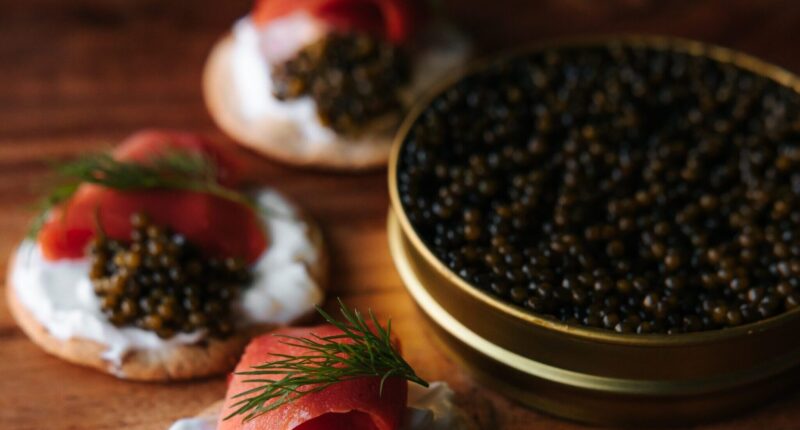In recent years, there has been a growing concern about the sustainability of caviar harvesting. Caviar, often considered a luxury delicacy, is derived from the roe of sturgeon, a prehistoric fish. However, overfishing and habitat destruction have led to a decline in sturgeon populations, pushing these magnificent creatures towards the brink of extinction. In this blog post, we will explore the sustainable future of caviar harvesting and the innovative approaches that are helping to save both the sturgeon and this prized culinary treasure. For more information on caviar, visit Sterling Caviar.
This article was written by Leslie Irving and originally published by California Business Journal.
The Sturgeon Crisis: A Looming Extinction
Sturgeon, with their ancient lineage and unique biology, are slow to mature and reproduce. Some sturgeon species can take up to 20 years to reach sexual maturity, making them highly vulnerable to overfishing. As demand for caviar has surged, many sturgeon populations have plummeted, and several species are now critically endangered. This crisis has prompted conservationists, scientists, and caviar producers to come together to find sustainable solutions.
Aquaculture: Farming Sturgeon For Caviar
One of the most promising approaches to ensuring the future of caviar is sturgeon aquaculture. By farming sturgeon in controlled environments, caviar producers can reduce the pressure on wild sturgeon populations while meeting the demand for this luxury product. Sturgeon farming offers several advantages:
- Reduced Pressure on Wild Populations: Farming sturgeon for caviar reduces the need for harvesting wild sturgeon, helping to protect these endangered species.
- Controlled Environments: Sturgeon farms provide ideal conditions for sturgeon growth and reproduction, ensuring better survival rates and higher caviar yields.
- Sustainable Feeding Practices: Farms can implement sustainable feeding practices, reducing the environmental impact of caviar production.
Caviar Without Sacrificing Sturgeon
Innovations in caviar production are also focused on minimizing the impact on sturgeon populations. Researchers have been exploring methods to obtain caviar without harming the fish:
- Non-Lethal Caviar Extraction: Some scientists have developed non-lethal methods of caviar extraction, such as ultrasound-assisted extraction, which allows caviar to be harvested without killing the sturgeon.
- Genetic Techniques: Genetic engineering techniques are being explored to create sturgeon that produce caviar continuously, eliminating the need for wild sturgeon harvesting.
Sustainable Sturgeon Farming Practices
Sturgeon aquaculture is not without its challenges, but sustainable practices are being implemented to ensure the well-being of these magnificent fish:
- Habitat Preservation: Sturgeon farms often mimic natural habitats, preserving wetlands and rivers that are essential for sturgeon survival.
- Reducing Pollution: Farms are adopting eco-friendly technologies to minimize water pollution and waste discharge.
- Species Diversity: Some farms are focused on breeding a variety of sturgeon species, including less-known ones, to reduce pressure on the most endangered species.
The Role Of Certification And Regulation
To guarantee the sustainability of caviar, certifications like “CITES” (the Convention on International Trade in Endangered Species of Wild Fauna and Flora) and “Aquaculture Sturgeon Caviar” have been established. These certifications ensure that caviar products come from sustainable sources and meet environmental and ethical standards. Additionally, governments and international bodies are imposing regulations to curb illegal fishing and protect sturgeon.
Consumer Awareness And Responsibility
As consumers, we also play a pivotal role in the sustainable future of caviar. By choosing caviar products from reputable sources and checking for sustainability certifications, we can support responsible harvesting practices. Reducing our consumption of caviar or enjoying it in moderation can help alleviate the demand pressure on sturgeon populations.
Conclusion: A Brighter Future For Caviar And Sturgeon
The future of caviar harvesting doesn’t have to come at the cost of sturgeon’s survival. Through sturgeon aquaculture, innovative extraction techniques, and responsible consumer choices, we can help preserve these magnificent fish and enjoy caviar guilt-free. By embracing sustainability and conservation efforts, we can ensure that caviar continues to grace our tables for generations to come, and sturgeon thrive in their natural habitats.





